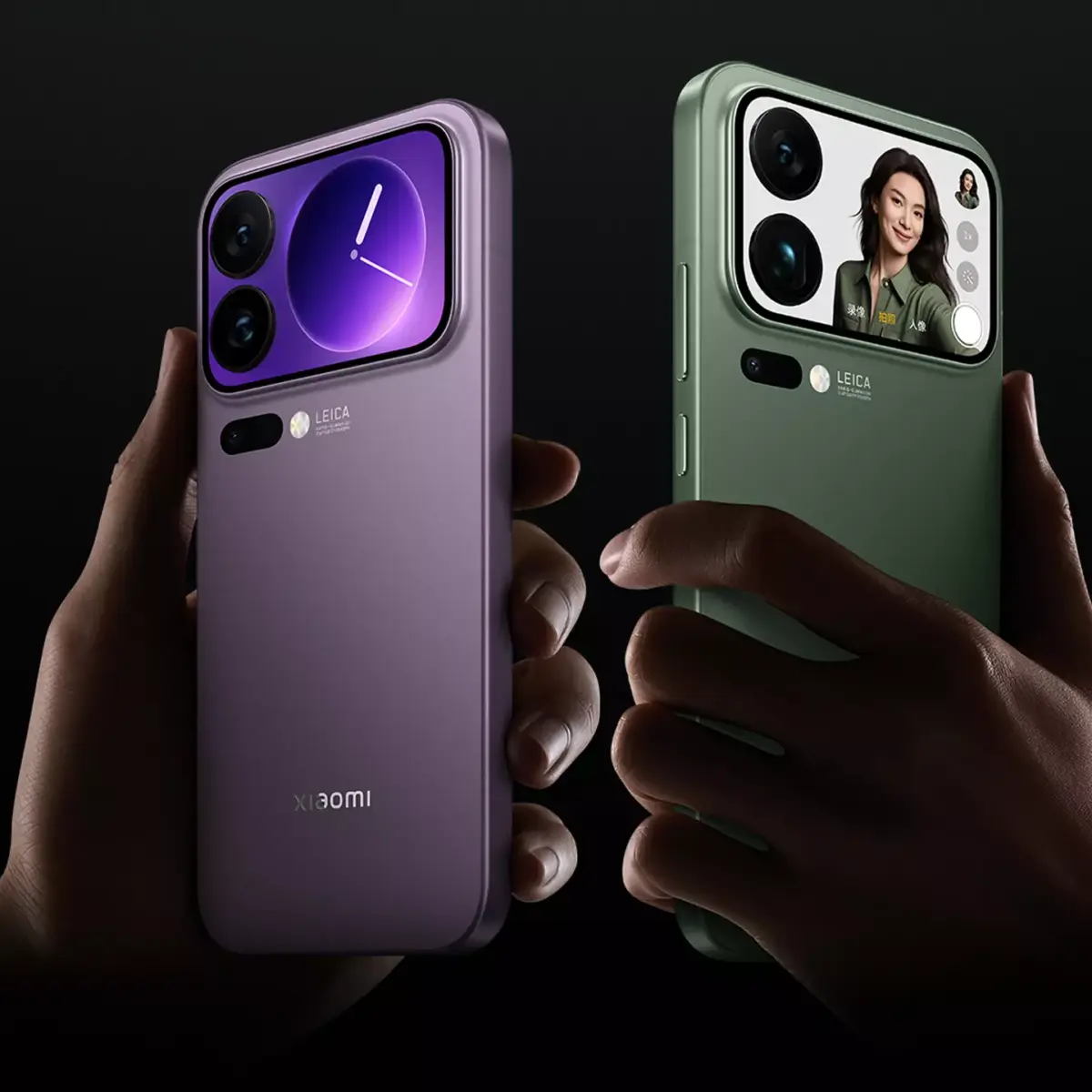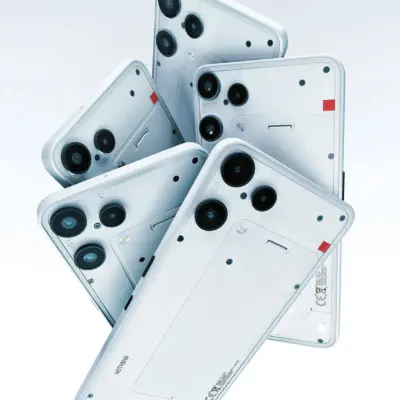Famous Thoughts and Tweets on the Xiaomi 17 Family
Before diving into the full review, here are notable opinions from prominent tech influencers and users on X (formerly Twitter). These capture early hype, specs breakdowns, and real-world impressions of the Xiaomi 17, 17 Pro, and 17 Pro Max, which launched in China on September 25, 2025.
Arun Maini (@Mrwhosetheboss), tech YouTuber with over 21 million subscribers, teased the series pre-launch:
“Xiaomi has just teased their next Flagships! They’ll be called the 17 series of phones (that numbering is clearly not an accident). They’ll have a ‘Magic Back Screen’ spanning the whole width of the phone. Thoughts? Video next week 👀”
This post garnered over 7,000 likes and sparked discussions on the bold naming and rear screen feature.
Marques Brownlee (MKBHD) was summarized by @sooma_ai:
“Marques Brownlee reviews the Xiaomi 17 Pro Max, positioning it as an iPhone-inspired device that surpasses Apple’s flagship in key areas including performance, battery life, camera capabilities, and its innovative rear display that enables advanced functionality.”
Techno Ruhez (@AmreliaRuhez), a popular Indian tech creator, shared specs with enthusiasm:
“Xiaomi 17 seems super Crazy Compact phone This Year 🔥 6.3′ 120Hz LTPO Flat OLED | Snapdragon 8 Elite Gen 5 | HyperOS 3 Android 16 | 50MP Light hunter 950 OIS+ 50MP Ultrawide + 50MP Telephoto | 50MP Selfie | 7000mAh battery | 100 watt Wired and 50 watt wireless… Price: 4499 Yuan (₹55,944) 12GB/256GB”
With over 1,500 likes, it emphasizes the compact design and massive battery.
Alvin (@sondesix) offered a balanced perspective:
“Xiaomi 17 Pro is an interesting phone with a really cool concept. It’s fun to play around with the customisation tools… But it’s just that. The rest of what this phone has is kinda underwhelming… If it’s not for the display, I think I’d be happier with the other Pro models like vivo X300 Pro or OPPO Find X9 Pro, especially if I take camera more seriously.”
Devinarde (@Devinarde) shared hands-on insights after two weeks:
“Here’s some thoughts about the Xiaomi 17 Pro Max’s Rear Screen: 1) I use it most for pictures of people and they love the ability to see themselves… 2) Selfies… 3) Pin to screen: this came as a surprise. Pinning QR codes/order numbers for food/etc… 4) AI background: this is borderline gimmicky but it’s fun.”
Njocha (@njocha_) reacted enthusiastically:
“Watching the MKBHD review of the Xiaomi 17 Pro Max and yeah that phone is insane. 7500mAh battery with triple 50 MP cameras and the box comes with a charger. Absolutely incredible!”
Sales figures show strong demand, with over 1 million units sold in China in just 9 days. Common themes: impressive hardware at aggressive pricing, but global access and software refinements remain pain points.
Unveiling the Xiaomi 17 Family: A Comprehensive Review
The Xiaomi 17 series represents Xiaomi’s most ambitious flagship push yet, directly challenging Apple’s iPhone 17 lineup with its audacious naming strategy and feature set. Comprising the Xiaomi 17, 17 Pro, and 17 Pro Max, this trio launched in China on September 25, 2025, blending cutting-edge specifications, innovative design elements like functional rear displays, and aggressive value pricing starting at approximately $630 (¥4,499). While currently limited to the Chinese market, early reviews suggest these devices could significantly disrupt global perceptions of Android flagships if expanded internationally.
Design and Build Quality
The Xiaomi 17 family emphasizes compactness without compromising premium aesthetics. The base Xiaomi 17 features a 6.3-inch 1.5K TCL M10 LTPO OLED flat display with 120Hz refresh rate and Dragon Crystal Glass protection. At just 191g and 8.06mm thick, it’s remarkably light considering its massive battery capacity.
The 17 Pro and Pro Max elevate the design with their “Magic Back Screens” measuring 2.66 inches on the Pro and 2.86 inches on the Pro Max. These rear displays enable unique functionalities including self-preview for photography, pinned QR codes, and AI-generated wallpapers that caught significant attention online.
All models boast IP68/IP69 ratings for dust and water resistance, ultrasonic in-display fingerprint scanners, and refined ergonomics with flattened edges that improve handling. Some critics note the design’s iPhone-like aesthetics, but most appreciate the balance of form and function. The Pro Max, weighing 219g, feels noticeably heftier but justifies this with its superior battery capacity.
Performance and Software
Powered by Qualcomm’s Snapdragon 8 Elite Gen 5 chipset paired with Adreno 840 GPU, LPDDR5X RAM, and UFS 4.1 storage, these phones deliver flagship-tier performance for gaming and multitasking. The devices run HyperOS 3 based on Android 16, which users praise for smoothness and AI-powered features.
However, software presents a mixed bag. Some users report non-removable Chinese applications and bootloader locks on imported units. Global users warn of limited Google services integration and missing features like Android Auto on China-sourced devices.
Connectivity impresses with Wi-Fi 7, Bluetooth 5.4, NFC, IR blaster, USB 3.2 Gen 1, and dual stereo speakers. Hands-on tests consistently highlight exceptional responsiveness and haptic feedback, making upgrades from older models worthwhile.
Battery Life and Charging: The Standout Feature
This category represents the Xiaomi 17 family’s most compelling advantage. The base Xiaomi 17 packs a remarkable 7,000mAh battery, the 17 Pro offers 6,300mAh, and the Pro Max delivers an astounding 7,500mAh—essentially double the capacity of many competitors.
All models support 100W wired and 50W wireless charging, with users consistently reporting over 6 hours of screen-on time with 5G connectivity. Reviews universally praise the battery performance as “much better” than predecessors like the Xiaomi 15 Ultra, positioning the series as a true battery champion against the iPhone 17.
Camera System
Co-engineered with Leica, the triple 50MP camera setup features a main sensor with OIS, ultrawide, and telephoto lenses that impress in early testing. The base model’s ultrawide has a narrower 102° field of view, drawing minor criticism, but overall image processing avoids the overly processed “painting look” and excels in portraits and zoom capabilities up to 60x.
The 50MP front camera handles selfies admirably, with the rear screen enabling better framing and composition. Influencers like MKBHD have lauded the camera system as superior to Apple’s offerings, though some reviewers find it underwhelming compared to specialized camera phones from Vivo or Oppo if photography is your absolute priority.
Pricing and Availability
The pricing strategy is aggressively competitive:
- Xiaomi 17 (12GB/256GB): ¥4,499 (~$630)
- Xiaomi 17 Pro: ¥4,999 (~$700)
- Xiaomi 17 Pro Max: ¥5,999 (~$841)
The series significantly undercuts premium competitors while offering superior specifications in key areas. Strong sales in China, with 1.076 million units sold in just 9 days, demonstrate robust demand. However, global rollout remains uncertain, raising concerns about international availability.
Pros and Cons at a Glance
Pros:
- Compact, premium build with innovative rear screen functionality
- Blazing fast Snapdragon 8 Elite Gen 5 performance
- Exceptional battery capacity with fast charging
- Versatile Leica-tuned camera system
- Aggressive pricing for flagship specifications
Cons:
- Heavier Pro Max model due to battery
- Software bloat on China models with limited global features
- Rear screen may feel gimmicky to some users
- Base model’s ultrawide camera underwhelms
- China-only launch limits accessibility
- Potential import complications for international buyers
Final Verdict
The Xiaomi 17 family presents a compelling alternative for consumers seeking premium features without the flagship price tag. In raw specifications and value proposition, it effectively “crushes” the iPhone 17, as early social media buzz suggests. The battery life stands out as genuinely exceptional, while the innovative rear display adds practical utility beyond mere novelty.
However, software polish and global availability present significant barriers to broader adoption. The combination of potential bloatware, limited Google services integration, and China-exclusive availability means this series primarily appeals to tech enthusiasts in China or those willing to navigate import complications.
If you’re located in China or comfortable importing devices, the Xiaomi 17 family warrants serious consideration. For everyone else, patience for potential international variants would be wise. Regardless, Xiaomi continues to redefine expectations for affordable flagships, pushing the entire industry toward better value propositions.
Rating: 8.5/10 – Exceptional hardware and value, held back by software concerns and limited availability.




